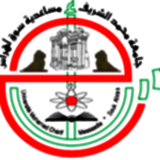Center of Academic Publications |
لغة الرسائل عند الطرق الصوفية في الجزائر التيجانية، القادرية والرحمانية أنموذجا - دراسة تداوليةhttps://www.univ-soukahras.dz/en/publication/article/2069 |
| (2019) لغة الرسائل عند الطرق الصوفية في الجزائر التيجانية، القادرية والرحمانية أنموذجا - دراسة تداولية. University of Souk Ahras |

Download Article
Abstract
-
The subject matter of this thesis is a pragmatic of the messages of the Sufi mysticism in Algeria. Ithas focused on three Sufi methods: Tijani, Kadiri and Rahmani. Though the messages of the leaders of these Sufi methods are characterized by theirdoctrinal discourses and social goals, they use language to reach their objectives. These messages need to be read and interpreted, most of which are oral or written discourses that rely mostly on arguments and proofs for persuasion.
Pragmatics as a science or a method,seeks for studying the systemic rules and their relations with users, It also based on the trilogy of time, place, and situation. Historically, the birth of pragmatics refers to the idea to speech acts where language was related to its actual use in reality.
There are many sources and topics of the messages of Sufi orders in Algeria which led to the variations of their discourses and intentionality. They also have different context and contents; some are general and other concern the Sufi society only. These messages deal with many issues, mainly religious, educational.
Accordingly, In the practical part, the thesis contained a part of argumentationand the means of persuasionin the messages of the Kadiri’s Method, in which we discussed the various argumentative and persuasive means: Linguistic means such as repetition, duplication and connectors, and the rhetorical means suchas: metaphor, simile and antithesis, in addition to the logical means such as the deductive analogy. In Kadiri’s method messages, connectors played an important role in the verbal and pragmatic coherence. They also preserve the cohesion , expansion and the total coherence of the text.
Because the process of persuasion requires consideration of the situational context, we discussed in the third chapter the situational context and its impact on meaning in the messages of the Rahmani’s method, where we highlighted the impact of the context in determining the significance of Rahmani’s messages, which makes the discourse more effective and persuasive.
The theory of speech acts was studied in the fourth chapter on the level of the Tijani’s discourse, which characterized by the frequent use of speech actsto confirm and persuade , in addition to the use of recommendations, obligations and other expressions needed by the situational context.
This study, in which I wanted to shed light on the pragmatic analysis of the Sufi mystical messages (Tijaniyah, Qadiriyah, and Rahmaniyah), led to the following results:
A / Sufi messages try to promote the idea of protecting the content to be communicated by the message.but they often turn from a mere means of communication to a tool to exercise power.
B) Sufi sheikhs adopted several pragmatic figures in their letters that appeared at the level of the structures.
C) The richness of Sufi messages and their ability to give fertile ground to such linguistic and pragmatic studies.
D) Sufi methods occupy an important place in Algeria because of their role in daily life and their wide influence.
As general conclusion, pragmatics has been able to open up new horizons for linguistic study after it has been dominated by formal structuralism and mental abstract perceptions.
Information
| Item Type: | Thesis |
|---|---|
| Divisions: | |
| ePrint ID: | 2069 |
| Date Deposited: | 2020-01-23 |
| Further Information: | Google Scholar |
| URI: | https://www.univ-soukahras.dz/en/publication/article/2069 |
BibTex
@phdthesis{uniusa2069,
title={لغة الرسائل عند الطرق الصوفية في الجزائر التيجانية، القادرية والرحمانية أنموذجا - دراسة تداولية},
author={},
year={2019},
school={University of Souk Ahras}
}
title={لغة الرسائل عند الطرق الصوفية في الجزائر التيجانية، القادرية والرحمانية أنموذجا - دراسة تداولية},
author={},
year={2019},
school={University of Souk Ahras}
}

 عربي
عربي Français
Français International Students
International Students